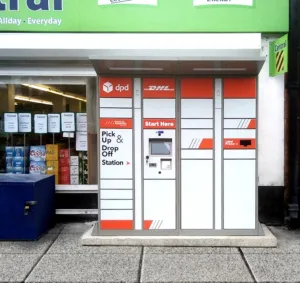By Rob Mason, Chief Technology Officer, Applause
Consumers are tightening their belts. The British Retail Consortium has reported a fall in sales volumes as customers cut back on discretionary spending due to high levels of inflation. Retail and consumer brands are responding by making improvements to the quality of experience across their sales and marketing channels, especially the digital experience. Brands understand the high standards their customers have come to expect and they’re working hard to keep those customers coming back.
Keeping up with the complex consumer experience
Retailers and consumer brands are under constant pressure to create the best physical and digital experiences to retain existing customers and attract new ones. Unfortunately, the bar is constantly being raised because of rapidly evolving technology like AI, VR and the metaverse.
Where online shopping experiences used to be simple and straightforward – visit a brand’s website, place an order and wait for it to arrive – today, players like Amazon have completely changed the retail landscape by providing shoppers with a consolidated view of product alternatives with a range of different prices and delivery options.
This has led to the situation today where you can walk into your favourite shop, choose an item and then compare the price and availability of your item with dozens of other shops and websites, and then make a decision to buy from the local store or one of many online alternatives. These new, better options are fantastic for the customer, but present retailers and other brands with the growing challenge of successfully competing in this highly complex, intricate web of channels and customer journeys.
Brands are working to ensure greater consistency and continuity of experience across bricks and mortar shops, online and the omnichannel experiences, but they can’t be complacent about digital quality. They need to ensure that all customer touchpoints are frictionless and first-rate.
‘Fact or friction?’ The data behind the glitches
To better understand the role of digital quality, it is useful to look at the key findings of a recent report that analysed retail testing data over a year, spanning 100+ countries, to identify points of friction within the customer journey. The extensive data set covered testing across websites, mobile apps and IoT devices in real-world scenarios.
The report evaluated five different bug types, these were content, crash, functional (workflow errors), lags and latency, and visual. A staggering 57,000 retail bugs were discovered in total. Retail workflow errors were discovered to be among the most common flaws. These are bugs that prevent shoppers from completing their desired tasks (choosing a specific colour or size, searching for similar items) or making a final purchase. Regardless of whether a customer is searching a website for items to buy, trying to access a chatbot or customer service agent for assistance, or checking out, they expect to complete the process without any glitches.
Retailers simply can’t afford any friction points that will lead to a customer abandoning the shopping experience, especially with online cart abandonment rates lingering around 70% (depending on the study), and mobile app cart abandonment standing at around 80%.
Therefore, it’s crucial that brands use real shoppers to test the end-to-end customer journey – across both digital and physical channels – to find and eliminate glitches and remove any friction from the customer experience. This is a proven methodology that uses a diverse set of testers who represent different genders, age groups and locations for multiple market testing.
This methodology allows brands to access and curate a sample of testers that match their customer profiles to create the best shopping experiences. They can run tests on websites, mobile apps and payment options, regardless of device, OS, market, location and even local language. All the while providing customer insights and feedback that can be quickly incorporated into the development process. Enabling brands to make tangible improvements in quality, reduce costs, release faster, and increase customer satisfaction and retention.
Winning in the digital world
As new devices emerge and proliferate and customer expectations rise, the need for testing becomes even more essential. The degree to which companies commit to improving digital quality while embracing innovation makes a difference. Those who are prepared to go the extra mile will differentiate themselves and earn a reputation for providing an excellent customer experience.
They can do this by utilising real-world insights to inform every aspect of the customer journey, from functionality and reliability to localisation and even digital accessibility for people with disabilities. This human-centric approach to software development and digital quality allows brands to innovate faster, and in a way that improves customer satisfaction and loyalty.







